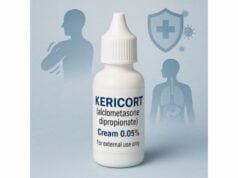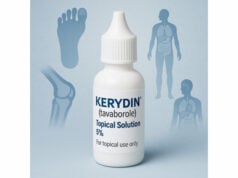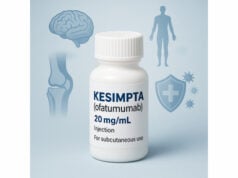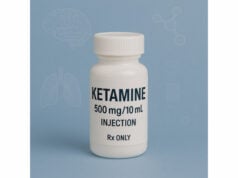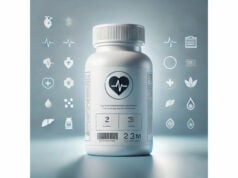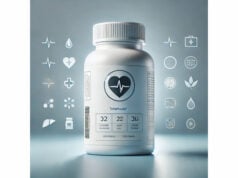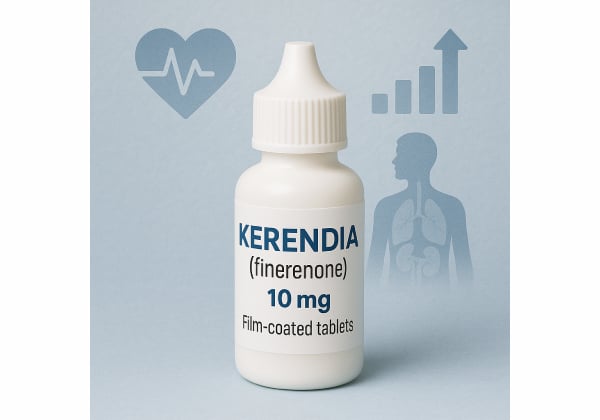
Kerendia (finerenone) is a next-generation, non-steroidal mineralocorticoid receptor antagonist (nsMRA). It is prescribed to reduce kidney disease progression and cardiovascular complications in adults with chronic kidney disease (CKD) associated with type 2 diabetes. More recently, Kerendia has also been authorized for adults with heart failure and a left ventricular ejection fraction (LVEF) of 40% or higher. Unlike older steroidal MRAs, finerenone was designed to maintain potent anti-inflammatory and anti-fibrotic activity while lowering off-target hormonal effects. In real-world terms, that means a medicine aimed at slowing scar-forming processes in the heart and kidneys—two organs that often fail together in diabetes. Kerendia is taken once daily, with careful monitoring of serum potassium and kidney function. When used alongside foundational therapy (such as ACE inhibitors or ARBs, SGLT2 inhibitors, statins, and blood-pressure control), many patients gain added protection against sustained eGFR decline, kidney failure, heart-failure hospitalization, and cardiovascular events. This guide explains how Kerendia works, who benefits, how to start and adjust the dose, which drug interactions matter most, and how to minimize risks.
Fast Facts
- Lowers risk of kidney disease progression and cardiovascular events in CKD with type 2 diabetes; benefits also shown in heart failure with LVEF ≥40%.
- Typical start: 10 mg or 20 mg once daily based on eGFR and potassium; target 20 mg (CKD) or 20–40 mg (HF) after 4 weeks if labs allow.
- Hyperkalemia is the key risk; check serum potassium and eGFR at baseline and again 4 weeks after any change, then periodically.
- Avoid with strong CYP3A4 inhibitors or in people with baseline potassium >5.0 mEq/L; use caution with other agents that raise potassium.
Table of Contents
- What is Kerendia and how it works
- Who should consider Kerendia
- How to take Kerendia: dosing and monitoring
- Drug interactions and combination therapy
- Risks, side effects, and who should avoid
- Evidence: what the studies show
What is Kerendia and how it works
The role of the mineralocorticoid receptor (MR). The MR is activated by aldosterone and, in certain settings, by glucocorticoids. Beyond salt and water balance, MR activation promotes inflammation and fibrosis in the heart and kidneys. Overactivity of this pathway is common in people with type 2 diabetes, albuminuria, hypertension, and heart failure. Blocking the MR can limit these damaging signals.
Why a non-steroidal MRA? Traditional MRAs (spironolactone, eplerenone) are steroidal. They improve outcomes but may trigger hormonal side effects (e.g., gynecomastia with spironolactone) and drug-interaction challenges. Finerenone is a non-steroidal MR antagonist with a different binding profile. It is highly selective for MR and exhibits balanced cardiorenal distribution, which is particularly relevant in CKD and heart failure. In clinical trials, finerenone added to standard therapy reduced kidney disease progression and lowered cardiovascular events in patients with CKD and type 2 diabetes. It also reduced heart-failure events among adults with LVEF ≥40%.
How Kerendia works in practice.
- Kidneys: Dampens pro-inflammatory and pro-fibrotic MR signaling in renal tissue, which can slow decline in glomerular filtration and reduce albuminuria over time.
- Heart: Limits pathological remodeling and fibrosis, supporting improved diastolic properties and reducing heart-failure hospitalizations in at-risk populations.
- Systemic effect: Unlike loop diuretics, finerenone is not a strong natriuretic at therapeutic doses; its main benefit is disease modification rather than immediate decongestion.
Where Kerendia fits in a modern care plan. It is typically layered on top of an ACE inhibitor or ARB (for renin-angiotensin system blockade), and often alongside an SGLT2 inhibitor, statin, blood-pressure control agents, and glucose-lowering therapies. This complementary approach targets different disease drivers—hemodynamic stress, metabolic load, inflammation, and fibrosis.
Key distinctions from older MRAs. Finerenone is taken once daily without the hormonal side effects that sometimes limit spironolactone. Its hyperkalemia risk is real but manageable when clinicians follow clear laboratory thresholds for starting, titrating, holding, and re-starting therapy.
Who should consider Kerendia
Primary group: CKD with type 2 diabetes. Adults with persistent albuminuria and reduced eGFR despite optimized ACEi/ARB therapy are prime candidates. Kerendia is used to lower the risk of sustained eGFR decline, end-stage kidney disease, and cardiovascular outcomes (e.g., cardiovascular death, non-fatal myocardial infarction, and heart-failure hospitalization). The benefit is most evident when albuminuria is elevated and blood pressure and glycemia are reasonably well-managed.
Heart failure with LVEF ≥40%. Kerendia is also indicated to reduce cardiovascular death, heart-failure hospitalizations, and urgent heart-failure visits in adults across the spectrum of mildly reduced to preserved ejection fraction. This broadens MR blockade beyond traditional HFrEF populations, offering another tool for patients who remain symptomatic or high-risk despite guideline-directed therapy.
Who may benefit most (clinical signals):
- People with T2D + CKD who have UACR ≥30 mg/g (especially ≥300 mg/g) and eGFR ≥25 mL/min/1.73 m² where albuminuria persists.
- Individuals with HFpEF/HFmrEF (LVEF ≥40%) experiencing recurrent congestion, elevated natriuretic peptides, or prior hospitalizations despite optimized therapy.
- Patients already on ACEi/ARB (and ideally SGLT2 inhibitor when appropriate) who need additional cardiorenal risk reduction.
Who may not be ideal candidates:
- People with baseline serum potassium >5.0 mEq/L, recent episodes of significant hyperkalemia, or those unable to adhere to lab monitoring.
- Patients with eGFR <25 mL/min/1.73 m² at initiation (initiation is not recommended).
- Individuals taking strong CYP3A4 inhibitors or those with adrenal insufficiency (contraindicated).
Decision-making tips for clinicians and patients:
- Start with the goal in mind: kidney protection, cardiovascular risk reduction, or both.
- Check the prerequisites: baseline potassium and eGFR, background ACEi/ARB tolerance, and current meds that may raise potassium.
- Discuss expectations: Kerendia is a long-term disease-modifying therapy—not a quick symptom reliever. Visible lab trends (albuminuria, eGFR slope) and event reductions accrue over months to years.
How to take Kerendia: dosing and monitoring
Before the first dose
- Measure serum potassium and eGFR.
- Do not initiate if potassium is >5.0 mEq/L.
- Review current medicines for CYP3A4 interactions and other potassium-raising agents.
Starting dose (based on eGFR)
- eGFR ≥60 mL/min/1.73 m²: 20 mg once daily.
- eGFR ≥25 to <60 mL/min/1.73 m²: 10 mg once daily.
- eGFR <25 mL/min/1.73 m²: initiation not recommended.
Tablets and administration
- Take once daily, with or without food, at the same time each day.
- Tablets may be crushed and mixed with water or soft food if swallowing is difficult.
Titration and targets
- Recheck potassium (and eGFR) 4 weeks after starting or changing dose.
- CKD with T2D target: 20 mg once daily, if labs allow.
- Heart failure (LVEF ≥40%) target:
- 40 mg once daily if eGFR ≥60 at initiation, or
- 20 mg once daily if eGFR ≥25 to <60 at initiation.
Potassium-guided adjustments (CKD with T2D)
- K ≤4.8 mEq/L: increase/maintain toward 20 mg daily (unless eGFR fell >30%, in which case maintain 10 mg).
- K >4.8–5.5 mEq/L: maintain current dose and intensify monitoring/diet review.
- K >5.5 mEq/L: withhold Kerendia; consider restarting at 10 mg when K ≤5.0 mEq/L.
Monitoring cadence
- At 4 weeks after initiation and after any dose change, then periodically (e.g., every 3–4 months, individualized).
- Step up frequency if eGFR is borderline, if adding another potassium-raising drug, or if recent labs trend upward.
Practical ways to minimize hyperkalemia
- Maintain or optimize diuretics (especially loop/thiazide as appropriate).
- Review dietary potassium only if levels rise; avoid sudden high-potassium diet shifts.
- Avoid salt substitutes high in potassium without clinician guidance.
- Address dehydration and intercurrent illness promptly; hold or adjust medicines during acute kidney insults per clinician advice.
If you miss a dose
- Take it when remembered on the same day. If it’s close to the next dose, skip the missed dose. Do not double up.
Drug interactions and combination therapy
CYP3A4-related interactions
- Contraindicated: strong CYP3A4 inhibitors (e.g., ketoconazole, itraconazole, clarithromycin, ritonavir/cobicistat-boosted regimens).
- Avoid: strong or moderate CYP3A4 inducers (e.g., rifampin, carbamazepine, phenytoin, St. John’s wort) as they may reduce efficacy.
- Use caution/monitoring: moderate or weak inhibitors (e.g., diltiazem, verapamil, erythromycin) may increase levels; monitor potassium more closely during initiation or dose changes.
- Grapefruit and grapefruit juice should be avoided.
Other potassium-raising agents
- Dual MRA therapy (spironolactone or eplerenone with finerenone) is not recommended due to compounded hyperkalemia risk.
- ACE inhibitor or ARB background therapy is expected; continue one, not both together.
- ARNI (sacubitril/valsartan): commonly co-used in HF; continue lab surveillance.
- NSAIDs, trimethoprim, potassium-sparing diuretics, high-dose potassium supplements, and salt substitutes can raise potassium; reassess need and monitor.
- SGLT2 inhibitors: complementary benefits in CKD and HF; may reduce hyperkalemia risk modestly in practice due to their mild natriuretic effect—still monitor as usual.
Effect on other drugs
- At 40 mg, finerenone may affect exposure of certain sensitive CYP2C8 substrates; clinicians should check for narrow-therapeutic-index drugs and monitor for adverse reactions.
How Kerendia integrates with guideline-based care
- CKD with T2D: ACEi/ARB + SGLT2 inhibitor as foundational therapy; add Kerendia for persistent albuminuria/elevated risk if potassium allows.
- HF with LVEF ≥40%: diuretics for congestion relief, SGLT2 inhibitor for outcome benefits, ARNI/ACEi/ARB and beta-blocker as indicated; add Kerendia to reduce HF events and urgent visits when lab thresholds are met.
Risks, side effects, and who should avoid
Most common effects
- Hyperkalemia (elevated serum potassium) is the principal risk; severity and frequency rise as eGFR declines or when combined with other potassium-raising agents.
- Mild hypotension and hyponatremia can occur, particularly in those already on multiple antihypertensives or with volume depletion.
Less common
- Dizziness, renal function changes (often small, hemodynamic), and occasional GI symptoms.
- Hypersensitivity reactions are rare; discontinue if angioedema, rash with systemic symptoms, or anaphylactoid features develop.
Who should not take Kerendia
- People using strong CYP3A4 inhibitors.
- Those with adrenal insufficiency.
- Individuals with hypersensitivity to finerenone or any tablet component.
Who should use with caution
- Patients with baseline K >5.0 mEq/L (do not initiate).
- Those with eGFR <25 mL/min/1.73 m² at baseline (initiation not recommended).
- Individuals with advanced liver disease—dose selection and monitoring require clinician judgment.
- Older adults and frail patients on multiple therapies—close lab follow-up is essential.
Pregnancy, lactation, and pediatrics
- Pregnancy: discuss individualized risk–benefit; human data are limited.
- Lactation: breastfeeding is not recommended while taking finerenone.
- Pediatrics: safety and effectiveness have not been established.
Practical safety checklist (for patients)
- Know your last potassium and eGFR numbers.
- Ask which foods/salt substitutes you should limit if potassium rises.
- Keep a lab calendar—baseline, 4 weeks after any start/change, then regularly.
- Tell clinicians about all over-the-counter meds and supplements (including herbal products).
- If you develop muscle weakness, palpitations, or significant lightheadedness, seek prompt evaluation and labs.
Evidence: what the studies show
CKD with type 2 diabetes (FIDELIO-DKD). Adults with CKD and T2D on maximally tolerated ACEi/ARB were randomized to finerenone or placebo. Finerenone reduced the composite kidney outcome (sustained eGFR decline, kidney failure, or renal death) and lowered cardiovascular events compared with placebo. Hyperkalemia occurred more often with finerenone but was typically manageable with protocolized monitoring and temporary holds.
Broader cardiovascular focus (FIGARO-DKD). In a complementary population with earlier CKD and T2D, finerenone significantly reduced a composite cardiovascular endpoint (including cardiovascular death, non-fatal myocardial infarction, non-fatal stroke, and heart-failure hospitalization), with consistent benefits across kidney-function strata and albuminuria levels. Kidney outcomes trended favorably, reinforcing a dual organ benefit profile.
Heart failure with LVEF ≥40%. Finerenone reduced cardiovascular death, heart-failure hospitalizations, and urgent heart-failure visits, expanding MR blockade benefits into the preserved and mildly reduced EF spectrum. This aligns with the pathophysiology of HFpEF, where fibrosis and inflammation are central; targeting MR signaling offers additive event reduction on top of standard agents.
Guideline positioning. Contemporary CKD and diabetes guidelines endorse layered therapy: maintain ACEi/ARB, add SGLT2 inhibitor (if eGFR allows), manage blood pressure and lipids, optimize lifestyle, and consider finerenone for persistent albuminuria and elevated cardiorenal risk. For HF with LVEF ≥40%, finerenone is now an outcomes-modifying option in addition to SGLT2 inhibitors, hypertension control, rhythm/rate management, and diuretics as needed.
What patients can expect.
- Time horizon: benefits accrue over months to years. You will not “feel” Kerendia working day-to-day; the payoff is fewer hospitalizations and a slower decline in kidney function over time.
- Monitoring: lab checks are part of the therapy. Temporary holds and restarts are common, sensible responses to potassium fluctuations—not failures of treatment.
- Synergy: Kerendia works with your existing plan; it is most effective when combined with other guideline-directed therapies and careful blood-pressure and glucose control.
References
- label (2025)
- Effect of Finerenone on Chronic Kidney Disease Outcomes in Type 2 Diabetes (2020) (RCT)
- Cardiovascular Events with Finerenone in Kidney Disease and Type 2 Diabetes (2021) (RCT)
- KDIGO 2022 Clinical Practice Guideline for Diabetes Management in Chronic Kidney Disease (2022) (Guideline)
Medical Disclaimer
The information in this article is educational and is not a substitute for personalized medical advice, diagnosis, or treatment. Medicines that affect kidney and heart outcomes, including Kerendia, require individualized assessment, laboratory monitoring, and follow-up. Always consult a qualified clinician before starting, stopping, or combining prescription or over-the-counter medicines. Seek urgent care for symptoms that may indicate high potassium (e.g., muscle weakness, palpitations) or allergic reactions. If this resource was useful, please consider sharing it on Facebook, X (formerly Twitter), or your preferred platform, and follow us for future evidence-based guides. Your support helps us continue producing high-quality content.

